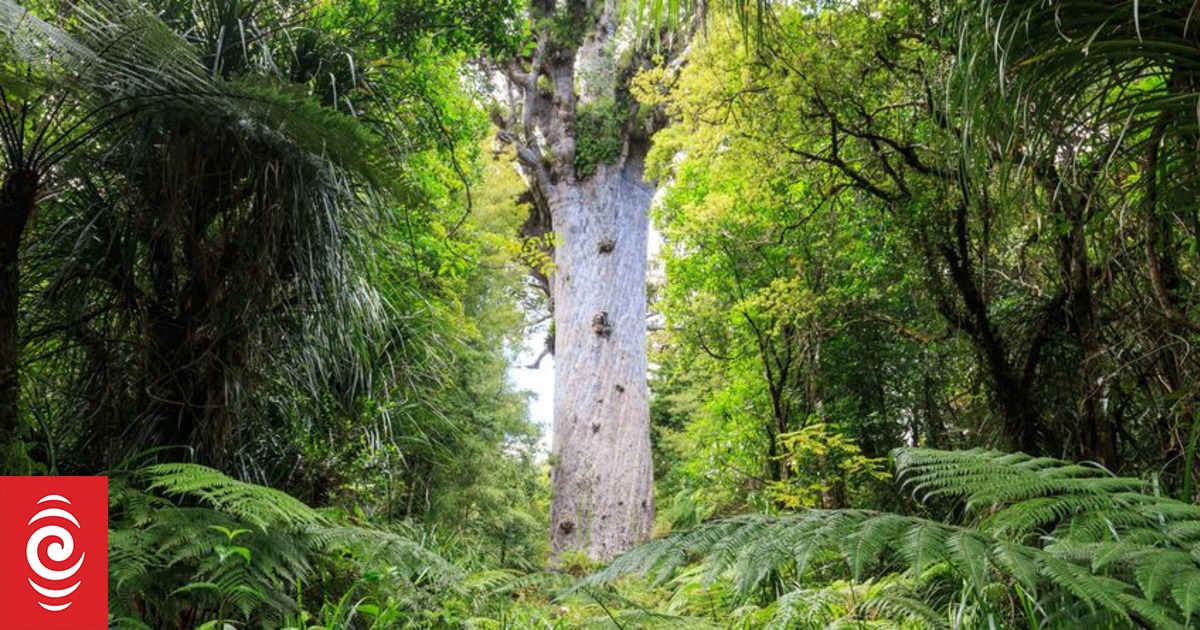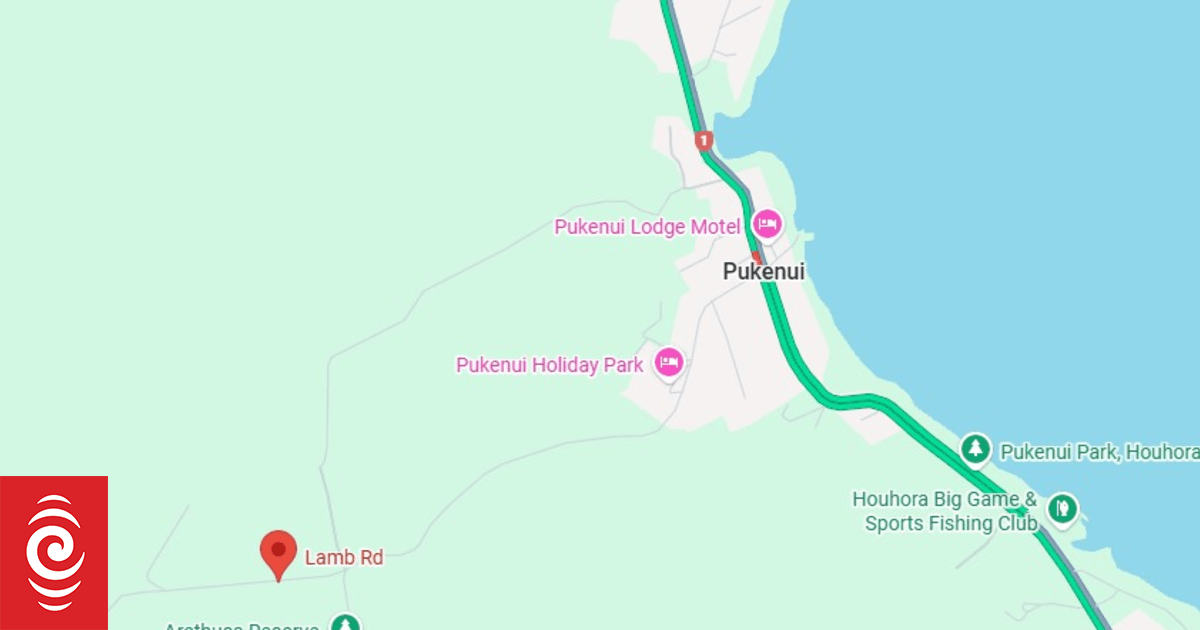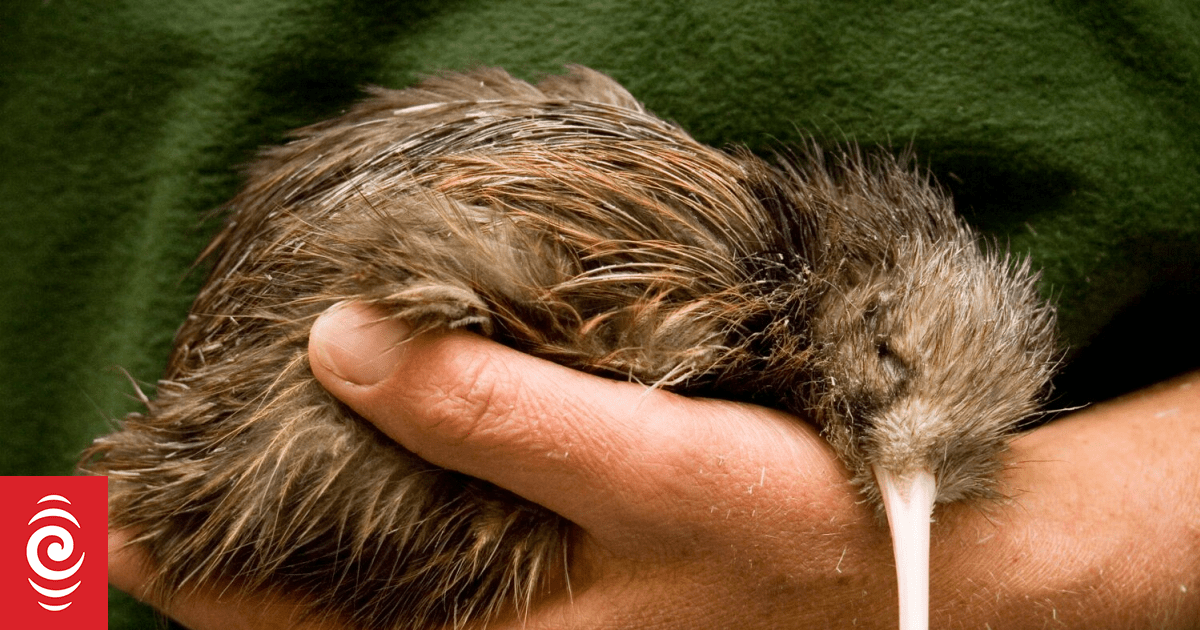
The new boardwalk under construction.
Photo: Supplied / Department of Conservation
Access to the world’s biggest kauri is set to be restored this Saturday after an almost three-month project to upgrade visitor infrastructure and protect the tree from a deadly pathogen.
At 51.5 metres tall, Tāne Mahuta, in Northland’s Waipoua Forest, is the largest survivor of the kauri that once cloaked much of the upper North Island.
Its precise age is unknown but could be as much as 2500 years. The estimate used by the Department of Conservation is 1500 years.
The tree has been off-limits since late September while contractors replaced a 30-year-old walkway described by DOC Kauri Coast operations direction Stephen Soole as run-down and past its use-by date.
“The work that’s going is phase one of a much wider project for Waipoua, and it centres around forest health.
“Phase one is essentially the replacement of the ageing infrastructure that was around Tāne Mahuta. So that’s the boardwalk, the viewing platform, and the bridge across the stream. We’re also taking the opportunity to upgrade the wash station at the entrance to the forest.”
The key reason for the upgrade was to protect the tree from kauri dieback, a disease caused by the pathogen Phytophthora agathidicida and spread, among other ways, by soil carried on people’s shoes.

Workers building a new viewing platform next to Tāne Mahuta, New Zealand’s largest surviving kauri tree.
Photo: Supplied / Department of Conservation
With more than 200,000 people visiting the forest each year, Soole said the improvements were essential.
“This will help prevent the spread by the allowing people to be well off the forest floor. They won’t come into contact with the forest floor at all, it’ll all be boardwalked up to a metre off the ground and it’ll be fitted with railings as well.”
The project was supposed to be completed in late November, but Soole said it had been delayed by weather and difficulties sourcing specialist materials.
Rigorous measures, such as sterilising machinery, isolating workers from soil and protecting Tāne Mahuta’s roots, had been taken throughout the project.
He was looking forward to Saturday’s blessing and seeing the new boardwalk completed.
“It’ll be a totally different experience in terms of the materials and the look of the infrastructure that takes you to the viewing platform with Tāne,” he said.
The upgrade is part of Rākau Rangatira, or Chiefly Trees, a wider project by DOC and local iwi Te Roroa.

Te Roroa Development group general manager Snow Tane and DOC Kauri Coast operations manager Stephen Soole at the entrance to the Tāne Mahuta Walk.
Photo: RNZ/Peter de Graaf
Snow Tane, general manager of Te Roroa Development Group, said Tāne Mahuta was hugely important to iwi, as well as for its place in the pūrākau [story] about the separation of the sky father Ranginui and earth mother Papatūānuku.
“The main purpose of Rākau Rangatira, from our perspective, is the health and well-being of our of our chiefly trees. So ensuring that we’re doing everything we can to keep them safe from kauri dieback, and secondly, to provide a world class experience for our visitors that are coming to coming to see special taonga like Tāne Mahuta.”
Tane said the discovery in 2018 of kauri dieback in trees less than 60 metres from Tāne Mahuta was a grave concern for iwi.
“We have to find ways to battle it, and we have been battling it now for many years. We’ve developed our own tools, our own ways in which we deal with it, with the support of not only our traditional healers in terms of our rongoā [traditional medicine] experts, but also with Western science.”
Tane said the iwi had a specialist team that identified which trees were sick, monitored them, and in some cases gave phosphite injections to improve their health.

The entrance to Tāne Mahuta Walk is currently a work site as contractors race to get it ready for this Saturday’s opening.
Photo: RNZ/Peter de Graaf
Later phases of Rākau Rangatira would include upgrades to the nearby Kauri Walks, and to the former forest headquarters – now owned by Te Roroa – so visitors would be able to leave their cars behind and take guided tours of the forest.
While Tāne Mahuta has been off limits, tourists like Emily Blythe and Liam Mason from the UK have been visiting other giant kauri instead.
They walked to Te Matua Ngahere, which, while not as tall as Tāne Mahuta, is broader and even more ancient, possibly as much as 3000 years old.
Blythe said they were awestruck by Te Matua Ngahere and not disappointed to miss out on seeing Tāne Mahuta.

Waipoua Forest is renowned for its giant kauri trees, such as these flanking the Darby and Joan Bridge on State Highway 12.
Photo: RNZ/Peter de Graaf
“It’s hard to get our heads around the scale of it. It’s amazing. For me, it was how old it was. It was like, ‘Wow, you were here before anyone was here’. The amount of things it must have seen.”
Meanwhile, Tane said the battle to make sure Northland’s kauri would survive thousands more years would go on.
“Ensuring that our Rākau Rangatira, our kauri, are healthy and well is vitally important to the people. We have a saying, ‘Ko au te ngahere, te ngahere ko au’, which means that we are the forest, the forest is us. It means also that if the forest is well, we are well.”
The new Tāne Mahuta Walk will be blessed at dawn on 21 December, and is due to open to the public at 9am. The walk is accessed from State Highway 12, about 60km north of Dargaville, or 20km south of Ōmāpere in South Hokianga.
Sign up for Ngā Pitopito Kōrero, a daily newsletter curated by our editors and delivered straight to your inbox every weekday.




